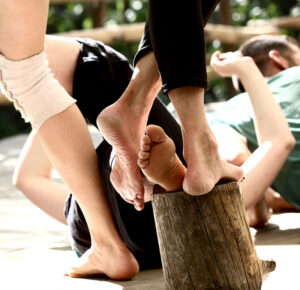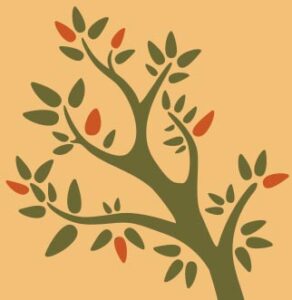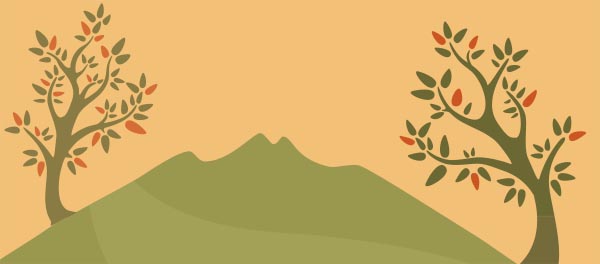Second week from August 17 to 24, 2025
With Matthieu Gaudeau
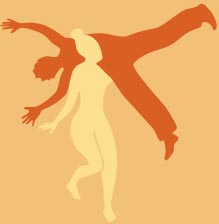
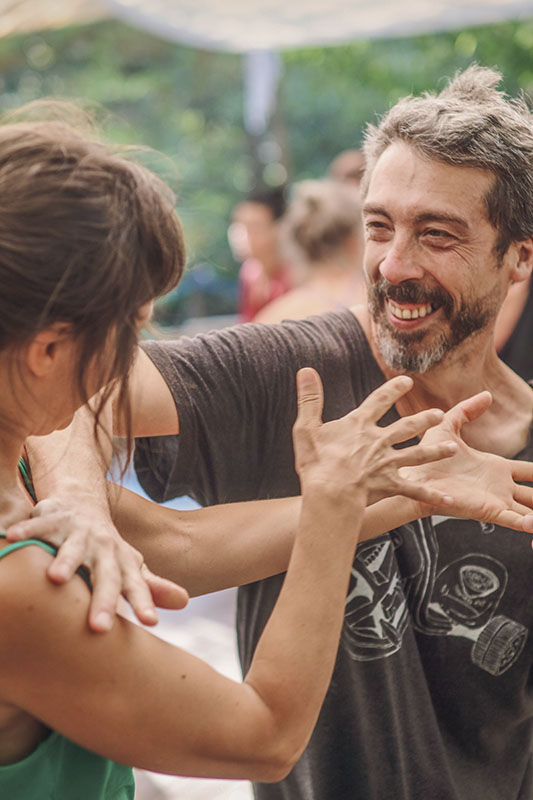
Fiction(s) terrestrial and tactile
“From fear to love, extension”
“There is an hour of the evening when the meadow will say something; it never says it or perhaps it says it infinitely and we do not hear it, or we hear it, but this something is untranslatable like music…” Fictions J.L Borgès.
“The mortal is the one who is immediately open to the world as a world.” R.M Rilke
In 1972, Steve Paxton prepared a performance at the John Weber Gallery in New York. He thus traced the contours of an improvisation based on a fiction, that of an imaginary improviser, who would be without physical, sensory or social inhibition. […] A generic person containing the positive elements observed in many students, dancers, martial arts practitioners and children.
Thus begins a long embodied exploration of the fall that will soon be called “Contact Improvisation”.
This fiction develops on the fertile soil of the end of the 20th century and is part of a larger movement. A small but influential group of researchers in different disciplines (psychology, psychoanalysis, philosophy and cognitive sciences) have begun to gather evidence demonstrating that mental experience depends not only on the brain, but on the entire animated organism (F. Varela, M. Johnson, D. Stern, A. Damasio…).
This research, also nourished by feminist movements, has made it possible to restore a place to embodied knowledge and a legitimate voice to lived experience.
Thus, for S. Paxton, N.S Smith, L. Nelson, K. Nelson, K. Simson, D. Lepkoff, and all the people who participate in this development, Newton’s theory and the not very talkative experience of the apple can be legitimately extended by the dancers. Everything is there so that the previous fiction, that of a separation maintained for so long between body and mind, can be put to the test of a fall.
I sometimes amuse myself by imagining how many experiences of falls have been consciously accumulated since 1972 and what knowledge has been born from them. Some talkative, documented, archived, others still in embryo in the places of practice. But to experience a fall with “the global consciousness of the body with open senses” according to S. Paxton’s formula, is in a certain way, to have the incredibly banal experience of walking, of touching, of meeting the world. Or again, without falling, without the experience of a relationship, of a displacement, without entanglements and encroachments, there would be no world.
It is this radical opening that we are confronted with so banally and often unbearably. It is in the hearth of this banality that lies a difficulty in recognizing its many implications. This is certainly why it is necessary to fall more “noisily”.
To undergo the consenting test of this opening, more probably requires reconnecting with our vulnerability, with time, and with trust; and all this undoubtedly requires a specific framework.
I sometimes wonder what sense it makes, to fall again today and thus to connect with gravity? What sense it makes, to do and re-do again the test of the reversibility of touch (touching/being touched)? To meet the other in the fall with a global awareness of the body with all senses open? Perhaps simply for the pleasure of disorientation; or because this practice gives back right and voice to our first-person experience; or that in this exploration, perception becomes a living, reciprocal and animated exchange and that this profoundly modifies our relationship to the implicit fictions of our time and to the neurosis of the senses that they impose (H. Godard – univocity of meaning, the fact that in the common modern sensitive experience, one can touch without being touched); because “The living only feels to pursue its oriented movement and only moves to feel better” (Barbaras).
And finally, there is an extension – unexpected? – of this experience. As D. Abram so rightly writes, “When we walk in the forest, we scrutinize its green and shady depths, we listen to the silence of the leaves, we appreciate the clean and fresh air. And yet the transitivity of perception, the reversibility of the flesh are such that we can suddenly feel that the trees are watching us – we feel exposed, observed from all sides. If we were to reside in this forest for months or years, our experience might change again—we might come to feel that we are part of this forest, that we are inbred with it, and that our experience of this forest is nothing but the forest experiencing itself.”
Perhaps this is, among other things, what our world needs.
So let’s fall!
.
Kim will start the week to see and review CI principles in a creative and fun way.
.
See the first week with Alice Dutreuil Nouchimowitz and Elise Malafosse
Second week from August 17 to 24
With Matthieu Gaudeau
Terrestrial and tactile fiction(s)
“From fear to love, extension”
“There is an hour in the evening when the meadow will say something; it never says it or perhaps it says it infinitely and we do not hear it, or we hear it, but this something is untranslatable like music…” Fictions J.L Borgès.
“The mortal is the one who is immediately open to the world as a world.” R.M Rilke
In 1972, Steve Paxton prepared a performance at the John Weber Gallery in New York. He thus traced the contours of an improvisation based on a fiction, that of an imaginary improviser, who would be without physical, sensory or social inhibition. […] A generic person containing the positive elements observed in many students, dancers, martial arts practitioners and children.
Thus begins a long embodied exploration of the fall that will soon be called “Contact Improvisation”.
Lire plusThis fiction develops on the fertile soil of the end of the 20th century and is part of a larger movement. A small but influential group of researchers in different disciplines (psychology, psychoanalysis, philosophy and cognitive sciences) have begun to gather evidence demonstrating that mental experience depends not only on the brain, but on the entire animated organism (F. Varela, M. Johnson, D. Stern, A. Damasio, etc.).
This research, also nourished by feminist movements, has made it possible to restore a place to embodied knowledge and a legitimate voice to lived experience.
Thus, for S. Paxton, N. S Smith, L. Nelson, K. Nelson, K. Simson, D. Lepkoff, and all the people who participate in this development, Newton’s theory and the taciturn experience of the apple can be legitimately extended by dancers. Everything is in place so that the previous fiction, that of a separation maintained for so long between body and mind, can be put to the test of a fall.
I sometimes amuse myself by imagining how many experiences of falls have been consciously accumulated since 1972 and what knowledge has been born from them. Some loquacious, documented, archived, others still in embryo in the places of practice.
But to experience a fall with “the global consciousness of the body with open senses” according to S. Paxton’s formula, is in a certain way to have the incredibly banal experience of walking, touching, meeting the world. Or again, without a fall, without the experience of a relationship, of a displacement, without entanglements and encroachments, there would be no world.
It is this radical opening that we are confronted with so banally and often in an unbearable way. It is in the hearth of this banality that lies a difficulty in recognizing its many implications. This is certainly why it is necessary to fall more “noisily”.
To undergo the consenting test of this opening, more probably requires reconnecting with our vulnerability, with time, and with trust; and all this undoubtedly requires a specific framework.
I sometimes wonder what sense it makes, to fall again today and thus to connect with gravity? What sense it makes, to do and re-do again the test of the reversibility of touch (touching/being touched)? To meet the other in the fall with a global awareness of the body with all senses open?
Perhaps simply for the pleasure of disorientation; or because this practice gives back right and voice to our first-person experience; or that in this exploration, perception becomes a living, reciprocal and animated exchange and that this profoundly modifies our relationship to the implicit fictions of our time and to the neurosis of the senses that they impose (H. Godard – univocity of meaning, the fact that in the common modern sensitive experience, one can touch without being touched); because “The living only feels to pursue its oriented movement and only moves to feel better” (Barbaras).
And finally, there is an extension – unexpected? – of this experience. As D. Abram so rightly writes, “When we walk in the forest, we scrutinize its green and shady depths, we listen to the silence of the leaves, we appreciate the fresh and sharp air. And yet the transitivity of perception, the reversibility of the flesh are such that we can suddenly feel that the trees are watching us – we feel exposed, observed from all sides.
If we were to reside in this forest for months or years, our experience might change again—we might come to feel that we are part of this forest, that we are in a relationship of consanguinity with it, and that our experience of this forest is nothing other than the forest experiencing itself.”
Perhaps this is, among other things, what our world needs.
So let’s fall!
See the first week with Alice Dutreuil Nouchimowitz and Elise Malafosse
